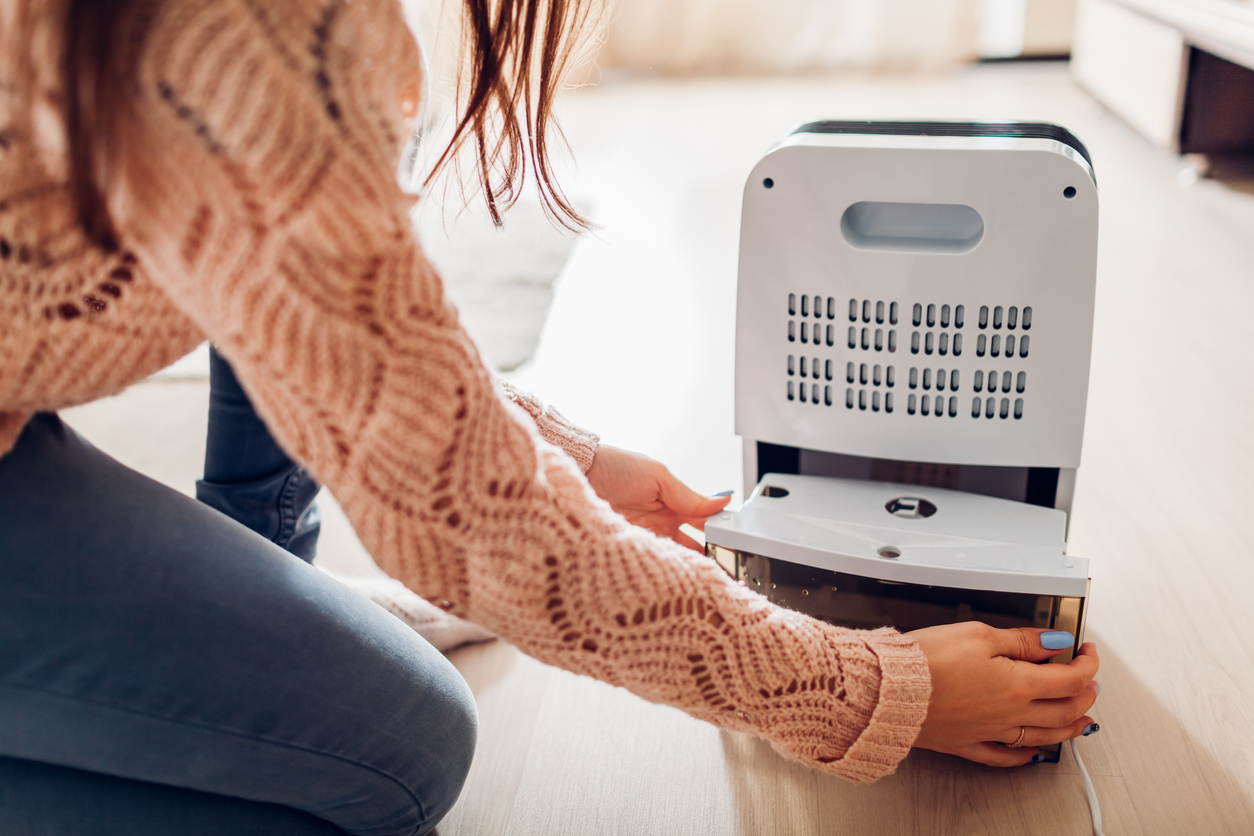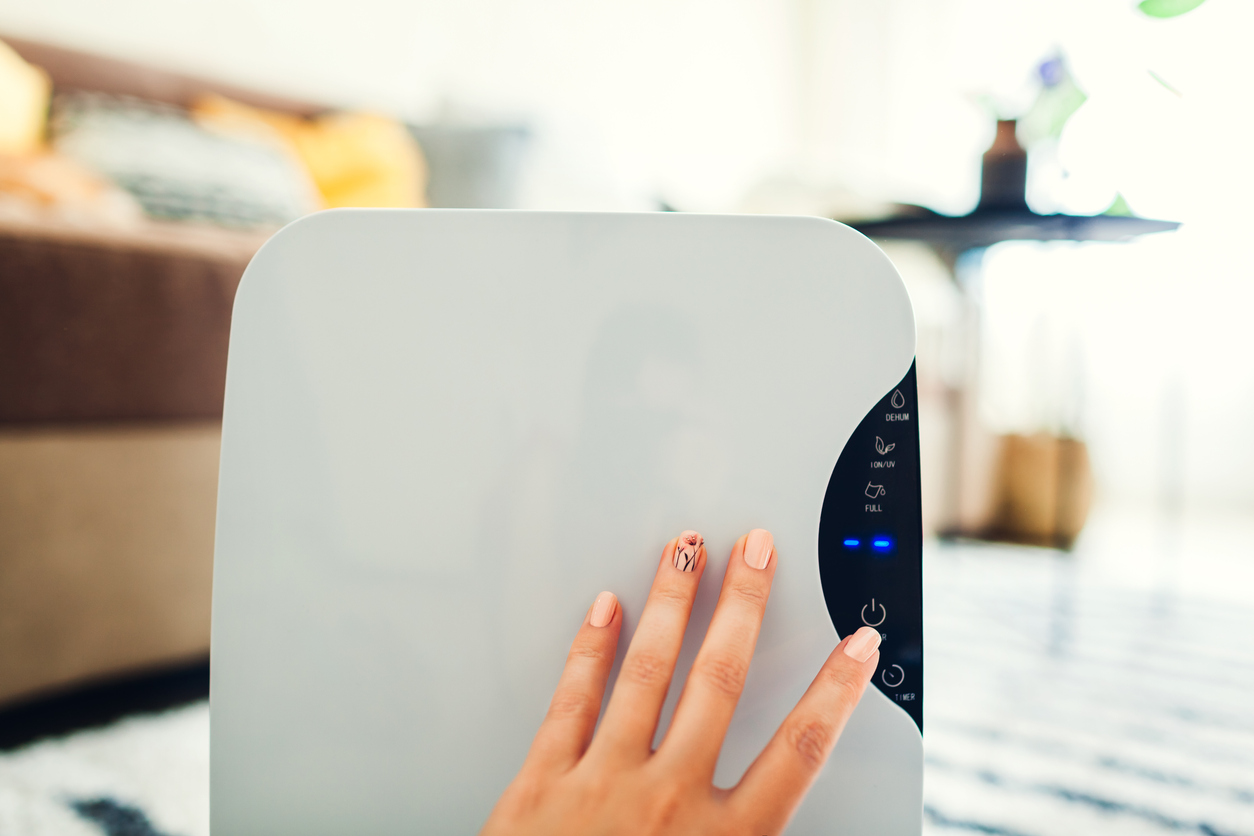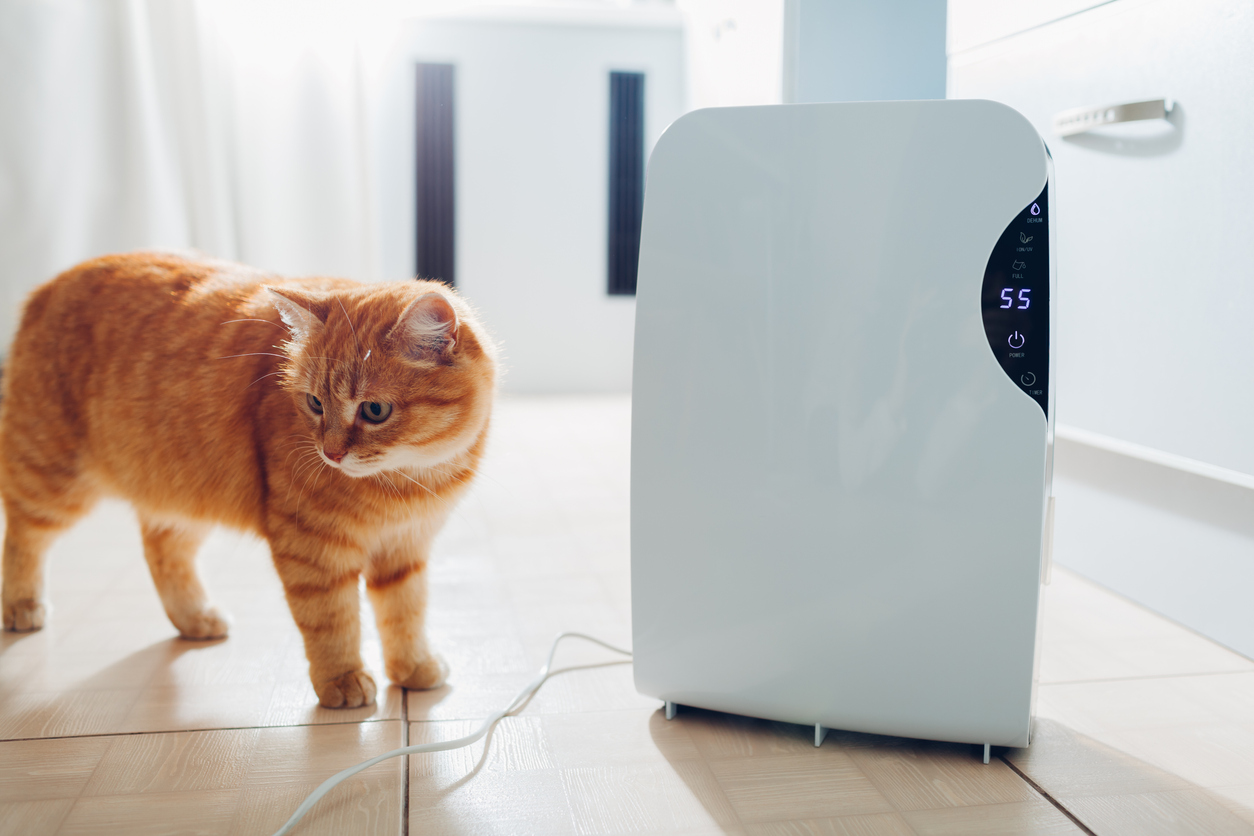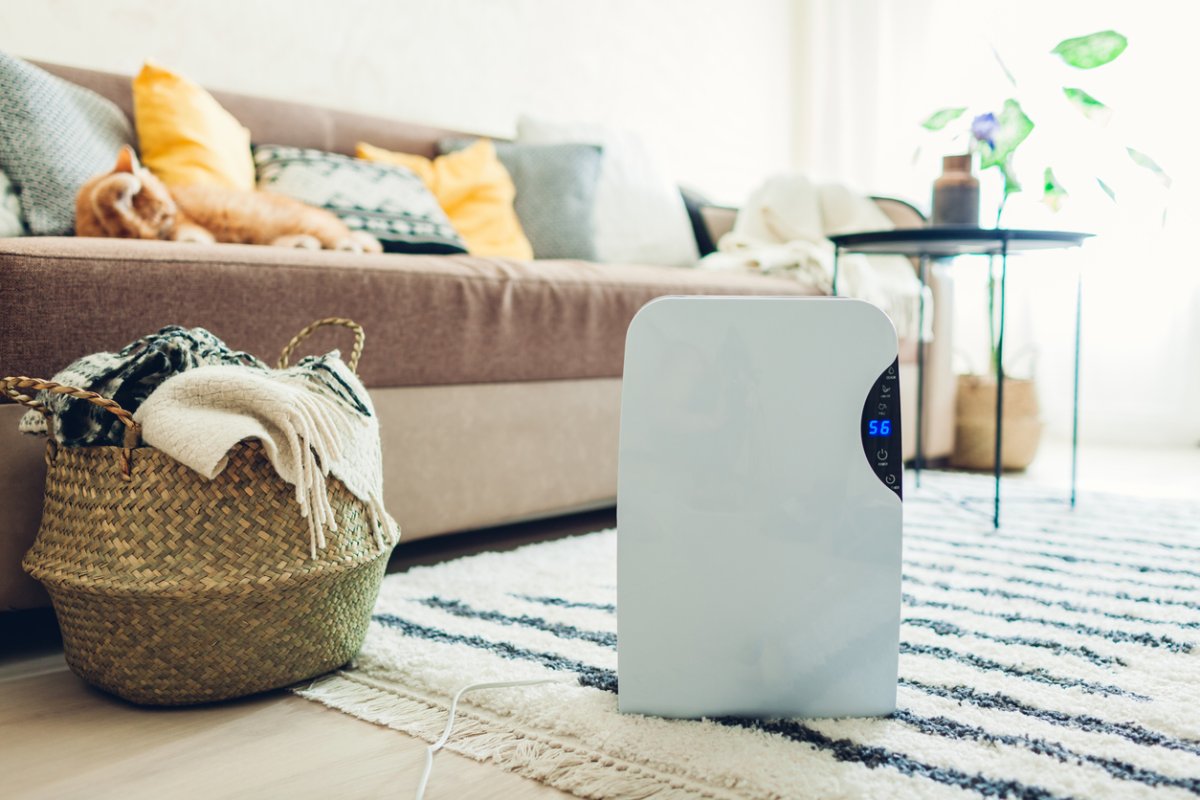We may earn revenue from the products available on this page and participate in affiliate programs. Learn More ›
Q: We live in an area where humidity is high, so we regularly run a dehumidifier to keep the air in our home from feeling sticky. Unfortunately, the dehumidifier seems to have stopped working. Is there a way we can fix it, or should we bite the bullet and buy a new one?
A: Sorry to hear about your dehumidifier woes! While the purchase of a new, quality dehumidifier might be an eventuality, there’s also a good chance that something minor has gone wrong and you might be able to fix this one yourself. Before troubleshooting the appliance, check first to make sure it’s plugged all the way into the outlet—and then plug something else into the same outlet to see if the problem lies with the power.
If the dehumidifier is plugged in and the outlet is working, the problem lies within the appliance itself. Taking time to check the following will help pinpoint possible reasons for the dehumidifier not working and whether it’s worth repairing.
The tank is full.
Most dehumidifiers come with a shut-off switch that turns the appliance off if the water in the collection tank reaches the top. If the dehumidifier has a drain line that runs to a floor drain, a full tank could indicate that the line has become kinked or is clogged.
Manually remove the collection tank, dump it, and then remove the drain line (it screws on like a hose) and ensure it’s not blocked. If it is and you can’t easily remove the clog, replace the drain line.

The humidity level is set too high.
Most dehumidifiers allow the user to select the desired level of humidity in the room, typically 30 to 40 percent. When the humidity rises above that level, the dehumidifier turns on and removes moisture from the air.
If someone inadvertently turned up the humidity level on the dehumidifier, it might not be coming on because the room’s humidity level is not high enough. Check to see that the desired humidity level is set no higher than 40 percent, and turn it down if it is.
The humidistat is broken.
If the desired humidity level isn’t too high, the problem could be with the humidistat. The humidistat is the actual component in the dehumidifier that turns the appliance on when moisture in the air reaches the preset level. It’s a small module often located just beneath the dehumidifier’s cover (check the owner’s manual for the exact spot).
If the humidistat no longer works, it can’t turn the dehumidifier on. Those familiar with testing electric currents can use a multimeter to test the humidistat for continuity (ohms). Or you can ask a professional electrician or technician to test the humidistat. If the component has gone bad, ordering a new one from the manufacturer and replacing it is a relatively simple task.
The room temperature is too cool.
The same principle that results in a glass of iced tea sweating in the summer is at work in dehumidifiers. Warm, moist air flows into the appliance where it comes into contact with ice-cold evaporator coils, causing the moisture in the air to condense and then drip down to a collection tank. However, if the room is cooler than 65 degrees, the moisture on the coils can turn to frost rather than condense and drain.
When frost forms on the evaporator coils, it keeps the appliance from working efficiently. Unplug the unit and lift the cover to check for frost. If you see it, leave the dehumidifier unplugged and allow the frost to melt, which can take a few hours, depending on how thick it is. Once the coils are clear, turn the unit back on and turn up the temperature in the room to keep frost from forming again.

Refrigerant fluid is too low.
The evaporator coils on a dehumidifier remain cold because they’re filled with pressurized refrigerant fluid, and a compressor pumps the fluid continuously through the coils. The coil system seals tightly to keep the fluid in, but tiny cracks can form over time, causing the fluid to leak out slowly.
Without sufficient refrigerant fluid, the evaporator coils will not become cold enough to draw moisture from the air. When this happens, unfortunately, it’s not an easy fix. A plumber or HVAC technician can recharge the coils with more refrigerant fluid, but the cracks can be difficult to seal, and the liquid could leak out again. Unless the dehumidifier is a pricey, whole-house unit, it’s usually more cost-effective to buy a new dehumidifier.
The fan stopped working.
The fan in a dehumidifier doesn’t blow air out. Instead, it draws air into the appliance so the moisture in the air comes into contact with the ice-cold coils. If the fan isn’t pulling in the air, the dehumidifying process can’t work effectively. The culprit could be a dirty fan or a broken fan blade.
If you are comfortable checking inside the unit, unplug it and then remove the cover, then turn the fan blade by hand to see if either debris or a broken blade is keeping the fan from turning. Manufacturers carry replacement blades, which users can order and install, usually with the help of just a screwdriver.
If a broken fan motor is at fault, however, the fix is more complex. Replacing a fan motor is a job for a professional technician. Depending on the existing dehumidifier’s value, it might be more cost-effective to purchase a new unit.

Something is blocking airflow.
If the fan is in good shape, something could be blocking airflow into the unit. This could be as simple as lint, dust, or pet fur buildup on the grill that covers the fan. A dehumidifier placed against a wall or next to an upholstered chair might not be able to draw in enough air. Position the dehumidifier at least a foot away from walls, furniture, curtains, clothing, and other items.
If a dirty or clogged grill is reducing airflow, unplug the unit, remove the grill cover, take it outdoors, and spray it clean with a hose. While you’re at it, if you see lint and debris in the interior of the dehumidifier case, consider taking the entire unit outdoors and cleaning away the mess with compressed air, either from a can or from the nozzle end of an air compressor hose.

Tried-and-True Advice
“I learned the hard way that pet hair and dust can build up fast, even on a unit that’s not directly against a wall. Now, I vacuum the air intake grille once a week using the brush attachment on my vacuum cleaner. It helps maintain airflow and prevents the fan from overworking.”
—Paul Rankin, Contributing Editor and Writer
Electrical parts or connections have gone bad.
Dehumidifiers contain electrical components that can go bad, and internal wiring that can short or come loose from connection terminals. Models made within the past decade or so might contain electronic control boards that can burn out and stop working.
Only someone familiar with electronic circuitry should test a dehumidifier’s wiring and electrical components. Some of the tests require that the dehumidifier remain plugged in during the test, so the best option in this case is to take the dehumidifier to a small appliance repair shop or have a technician come out and take a look.
The dehumidifier’s compressor is overloaded.
The dehumidifier’s compressor is the core of the unit, and it circulates refrigerant liquid through the coils. If the compressor is struggling to operate or if heavy frost develops on the coils, the compressor can become overheated.
Most dehumidifiers have an overload switch that will shut an overheated compressor down to keep from damaging it. If the dehumidifier doesn’t make a sound when turned on, the overload switch might have flipped. If the compressor overheated due to frost buildup, you can try resetting the overload switch (check the owner’s manual for location) once the frost has melted.
Unfortunately, other problems can cause an overload switch to flip, and some of them are related to short-circuiting of the appliance’s wiring. If this is the case, the overload switch will continue to flip even after resetting, and a technician will likely be required to pinpoint the cause. Some users might opt to instead purchase a new unit at this point. If you get to this stage, our guide to choosing a dehumidifier should prove useful.


